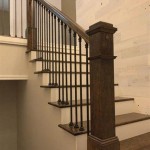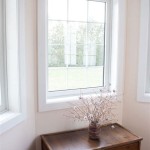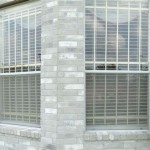Interior Design Picture Ideas: Inspiring Your Next Project
Visual inspiration serves as a cornerstone of successful interior design. Interior design picture ideas, sourced from a variety of avenues, provide designers and homeowners alike with a springboard for creative exploration and project development. These images communicate aesthetic principles, showcase innovative solutions, and offer a tangible understanding of spatial arrangement, color palettes, and material application. Examining successful interior design examples facilitates the translation of abstract concepts into actionable plans.
The process of gathering and analyzing interior design picture ideas is multifaceted. It extends beyond simply creating a mood board. Effective use of these images involves a critical assessment of the underlying design choices, an understanding of current trends, and an awareness of how individual elements contribute to the overall aesthetic. This involves dissecting the composition of a room, identifying recurring themes, and understanding the practical considerations that informed the design.
The availability of interior design picture ideas has exponentially increased with the proliferation of digital platforms. Online resources, design magazines, and social media channels offer a seemingly endless stream of visual content. Navigating this abundance requires a discerning eye and a clear understanding of personal preferences and project requirements. Selecting relevant and inspiring images is crucial for maintaining focus and avoiding the pitfalls of stylistic overload.
Understanding the Importance of Context
Interior design picture ideas are most effective when viewed within a specific context. Simply admiring a visually appealing room is insufficient. To effectively utilize these images, one must consider the spatial dimensions of the room, the existing architectural features, and the intended function of the space. A design that works well in a large, open-plan living area may not translate effectively to a small, enclosed bedroom. Understanding the limitations and opportunities presented by the existing environment is paramount.
Furthermore, the geographical location and climate of the project influence design decisions. A coastal home in a warm climate will likely benefit from light, airy fabrics and cool color palettes, while a mountain chalet in a cold climate may call for warmer tones, natural materials, and a focus on creating a sense of coziness. Ignoring these contextual factors can lead to designs that are aesthetically pleasing but ultimately impractical or incompatible with the environment.
Another crucial aspect of context is the lifestyle and personal preferences of the inhabitants. A family with young children will have different needs and priorities than a single professional or a retired couple. Design choices should reflect the occupants' daily routines, hobbies, and personal style. Interior design picture ideas should be evaluated in terms of their suitability for the intended users and their ability to enhance their quality of life.
Finally, budget considerations play a significant role in shaping the scope and feasibility of interior design projects. High-end materials and custom-built furniture may be desirable, but they may not be financially viable for every project. Interior design picture ideas can be used to explore alternative materials, affordable furniture options, and DIY projects that can achieve a similar aesthetic at a lower cost.
Key Elements to Analyze in Interior Design Pictures
When examining interior design picture ideas, it is essential to look beyond the surface level and delve into the underlying elements that contribute to the overall design. Several key areas warrant particular attention.
First, the color palette is a fundamental aspect of any interior design scheme. Analyze the dominant colors, the accent colors, and the overall harmony or contrast created. Consider how the colors interact with the natural and artificial light in the room. Explore different color combinations and their psychological effects. A well-chosen color palette can evoke specific moods, enhance the perception of space, and create a cohesive visual identity.
Second, the furniture arrangement plays a crucial role in defining the flow and functionality of a space. Pay attention to the placement of furniture pieces, the scale and proportion of each item, and the way they interact with each other. Consider the principles of balance, symmetry, and rhythm in furniture arrangement. A well-planned furniture layout can maximize space utilization, improve circulation, and create comfortable and inviting seating areas.
Third, lighting is a critical element that often overlooked. Observe the types of lighting used in the room, including natural light, ambient lighting, task lighting, and accent lighting. Consider the placement of light fixtures and their effect on the overall ambiance. Explore different lighting techniques to create depth, highlight architectural features, and enhance the visual appeal of the space. Appropriate lighting is essential for creating a functional and aesthetically pleasing environment.
Fourth, accessories and decorative elements contribute to the personality and character of a room. Analyze the use of artwork, textiles, plants, and other accessories to add visual interest and reflect the personal style of the inhabitants. Consider the scale, color, and texture of these elements and their relationship to the overall design. Thoughtfully chosen accessories can elevate a space from ordinary to extraordinary, adding warmth, sophistication, and a sense of individuality.
Fifth, material selection significantly impacts the overall aesthetic and functionality of a space. Consider the types of materials used for flooring, walls, countertops, and furniture. Analyze the textures, patterns, and colors of these materials and their contribution to the overall design. Explore different material combinations and their suitability for the intended use. The choice of materials should balance aesthetic considerations with durability, maintenance, and cost-effectiveness.
Utilizing Digital Tools and Resources Effectively
The digital age has revolutionized the way interior design picture ideas are accessed, organized, and utilized. Numerous online tools and resources are available to assist in the process of gathering inspiration and translating it into actionable design plans.
Pinterest serves as a powerful platform for creating and managing visual mood boards. Users can create themed boards to store and categorize images related to specific design styles, color palettes, or furniture types. The platform's search functionality allows for easy discovery of new ideas and trends. Pinterest's visual nature makes it an ideal tool for gathering and organizing interior design picture ideas.
Instagram provides a wealth of inspiration from interior designers, architects, and homeowners. Following relevant accounts and hashtags can expose users to a continuous stream of visual content. Instagram's community features allow for interaction with designers and fellow enthusiasts, fostering a collaborative and informative environment. The platform's focus on visual storytelling makes it a valuable resource for discovering new trends and innovative design solutions.
Online design magazines and blogs offer curated collections of interior design picture ideas, accompanied by expert commentary and insightful articles. These resources provide context and analysis, helping users understand the underlying principles and practical considerations behind each design. Subscribing to newsletters and following social media channels can ensure a consistent flow of inspiration and information.
Virtual reality (VR) and augmented reality (AR) technologies are increasingly being used to visualize interior design concepts in a more immersive and interactive way. VR allows users to explore virtual representations of rooms and experience different design options firsthand. AR enables users to overlay virtual furniture and accessories onto real-world spaces, providing a realistic preview of the final result. These technologies offer a powerful tool for visualizing and refining interior design picture ideas.
Software applications designed for interior design allow users to create 2D and 3D models of rooms, experiment with different layouts and finishes, and generate photorealistic renderings. These tools provide a comprehensive and professional approach to interior design, enabling users to translate their ideas into detailed plans and visualizations. Learning to use these software applications can greatly enhance the ability to effectively utilize interior design picture ideas.
Effectively using interior design picture ideas involves a structured approach. Begin by defining the scope and goals of the project. Identify key areas of focus and establish a budget. Then, gather a collection of images that resonate with personal preferences and project requirements. Analyze these images carefully, paying attention to the key elements and contextual factors discussed earlier. Finally, translate these ideas into a concrete design plan, utilizing digital tools and resources to visualize and refine the final result.

13 Creative Home Decor Ideas To Transform Your Space

10 Modern Home Interior Design Ideas All You Need To Know A House In The Hills

Latest Interior Design Ideas For Your Home Decor Wooden Street

18 Interior Design Ideas Home
/s3.amazonaws.com/static.havenly.com/prod/assets/boards/4227759/board_4227759_97d4b027?strip=all)
25 Interior Design Ideas Havenly

15 Best Modern Interior Design Ideas Of 2025 Decorilla

15 Best Modern Interior Design Ideas Of 2025 Decorilla

10 Must Try Modern Living Room Design Ideas

Home Decor And Interior Design Ideas For Every Room Jk Cement

Latest Interior Design Ideas For Your Home Decor Wooden Street
Related Posts








